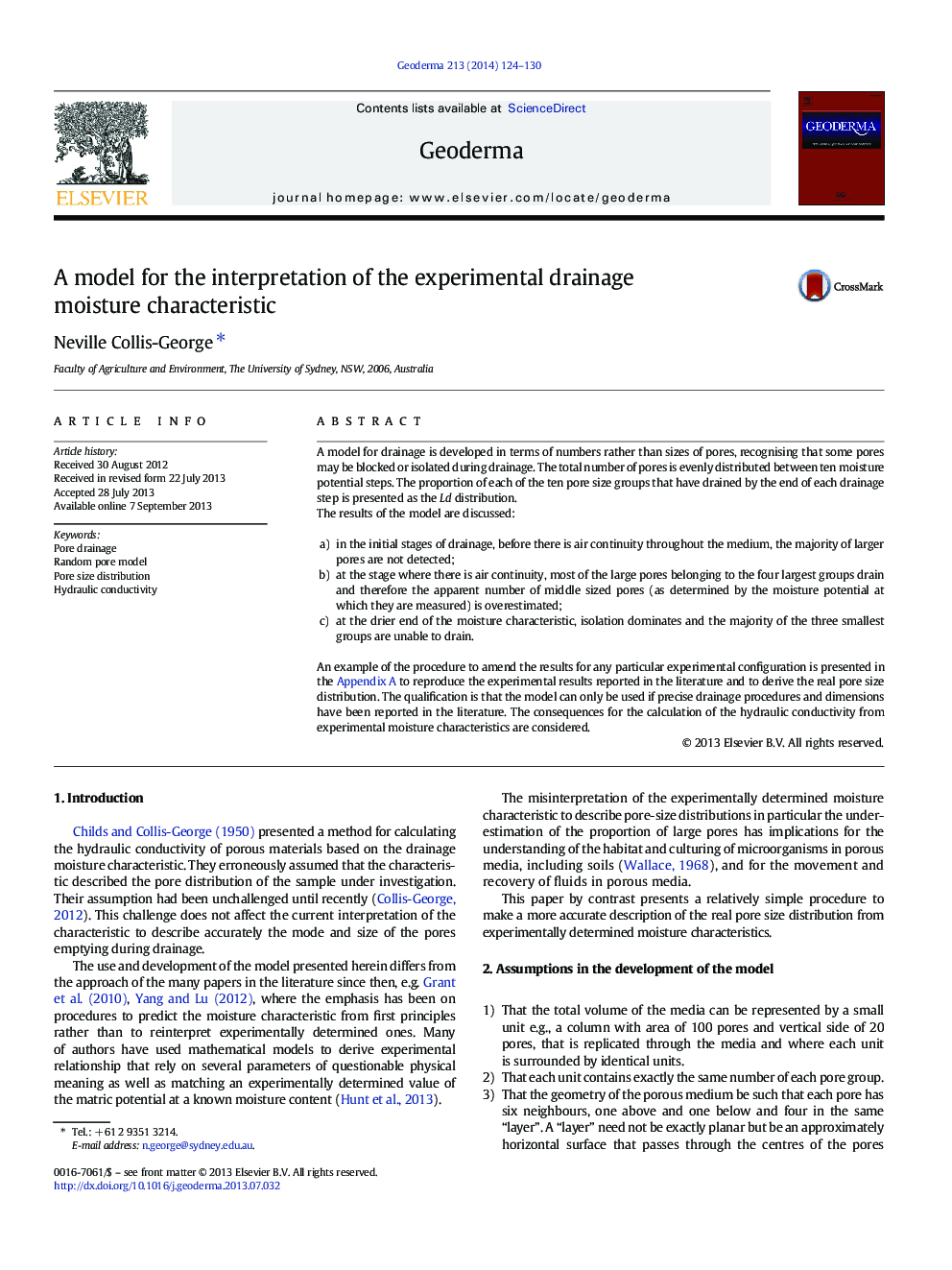| Article ID | Journal | Published Year | Pages | File Type |
|---|---|---|---|---|
| 6408939 | Geoderma | 2014 | 7 Pages |
A model for drainage is developed in terms of numbers rather than sizes of pores, recognising that some pores may be blocked or isolated during drainage. The total number of pores is evenly distributed between ten moisture potential steps. The proportion of each of the ten pore size groups that have drained by the end of each drainage step is presented as the Ld distribution.The results of the model are discussed:a)in the initial stages of drainage, before there is air continuity throughout the medium, the majority of larger pores are not detected;b)at the stage where there is air continuity, most of the large pores belonging to the four largest groups drain and therefore the apparent number of middle sized pores (as determined by the moisture potential at which they are measured) is overestimated;c)at the drier end of the moisture characteristic, isolation dominates and the majority of the three smallest groups are unable to drain.An example of the procedure to amend the results for any particular experimental configuration is presented in the Appendix A to reproduce the experimental results reported in the literature and to derive the real pore size distribution. The qualification is that the model can only be used if precise drainage procedures and dimensions have been reported in the literature. The consequences for the calculation of the hydraulic conductivity from experimental moisture characteristics are considered.
